A makerspace is a collaborative work space inside a school, institution or separate public/private facility for making, learning, exploring and sharing that uses high tech to no tech tools. These spaces are open to kids, adults, and entrepreneurs and have a variety of maker equipment including 3D printers, laser cutters, cnc machines, soldering irons and even sewing machines.
1. Health & Safety Guidelines:
- Never adopt a casual attitude in the workshop and always be conscious of the potential hazards.
- Wear the right safety equipment like shoes to protect the feet incase the tool or part slips and falls.
- Wear the eye glasses when using power operated hand or machine tools, or performing physical tests leading eye damage.
- Do not use tools which are loose or cracked.
- Handle sharp-edged and pointed tools with care.
- Secure all small work & short work with a vise or clamp.
- After using a tool, clean it and return it to its proper storage place.
- Keep your cutting tools sharp and in good condition.
- Never place tools and materials where they hang on the edge of a bench.
- Always carry pointed tools by your side with the points and heavy ends down.
- Do not work with oily hands.
- Do not handle, store or consume food or drink in the workshop.
2. Hand Tools:
A hand tool is any tool that is powered by hand rather than a motor. Categories of hand tools include wrenches, pliers, cutters, files, striking tools, struck or hammered tools, screwdrivers, vises, clamps, snips, saws, drills and knives.
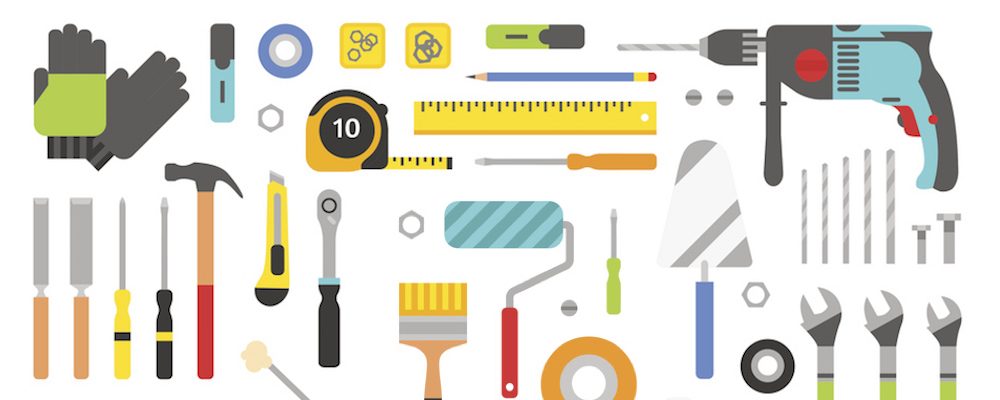
1. Try Square - An implement used to check and mark right angles in constructional work. A try square is a
woodworking tool used for marking and measuring a piece of wood. The square refers to the tool's primary use of measuring
the accuracy of a right angle (90 degrees); to try a surface is to check its straightness or correspondence to an
adjoining surface. "Try square" is so called because it is used to "try" the squareness.
2. G Clamp - A C-clamp or G-clamp is a type of clamp device typically used to hold a wood or metal workpiece, and
often used in, but are not limited to, carpentry and welding. Often believed that these clamps are called "C" clamps
because of their C-shaped frame, or also often called C-clamps or G-clamps because including the screw part they are
shaped like an uppercase letter G.
3. Coping Saw - A Coping Saw is a type of bow saw used to cut intricate external shapes and interior cut-outs in
woodworking or carpentry. It is widely used to cut moldings to create coped rather than mitre joints. It is occasionally
used to create fretwork though it is not able to match a fretsaw in intricacy of cut, particularly in thin materials.
4. Hand Saw - A Hand Saw, also known as "panel saw", is used to cut pieces of wood into different shapes. This
is usually done in order to join the pieces together and carve a wooden object. They usually operate by having a
series of sharp points of some substance that is harder than the wood being cut. The hand saw is a bit like a
tenon saw, but with one flat, sharp edge.
5. Measuring Tape - A Tape Measure or measuring tape is a flexible ruler and used to measure distance. It
consists of a ribbon of cloth, plastic, fibre glass, or metal strip with linear-measurement markings. It is a
common measuring tool. Its design allows for a measure of great length to be easily carried in pocket or toolkit
and permits one to measure around curves or corners.
6. Claw Hammer - A Claw Hammer is a tool primarily used for driving nails into, or pulling nails from, some
other object. Generally, a claw hammer is associated with woodworking but is not limited to use with wood products.
It is not suitable for heavy hammering on metal surfaces.
7. Dead Blow Hammer - A Dead Blow Hammer is a specialized mallet helpful in minimizing damage to the struck
surface and in limiting peak striking force, with minimal elastic rebound from the struck surface. The minimal
rebound is helpful in avoiding accidental damage to precision work, especially in tight locations and in
applications such as maintenance work on hydraulic cylinders.
8. Chissel - A Chisel is a tool with a characteristically shaped cutting edge (such that wood chisels have lent
part of their name to a particular grind) of blade on its end, for carving or cutting a hard material such as wood,
stone, or metal by hand, struck with a mallet, or mechanical power.
9. Rasps - A Rasp is coarse form of file used for coarsely shaping wood or other material. Typically a hand
tool, it consists of a generally tapered rectangular, round, or half-round sectioned bar of case hardened steel
with distinct, individually cut teeth. A narrow, pointed tang is common at one end, to which a handle may be
fitted.
10. Sand Paper - Sandpaper and glasspaper are names used for a type of coated abrasive that consists of sheets
of paper or cloth with abrasive material glued to one face. Despite the use of the names neither sand nor glass
are now used in the manufacture of these products as they have been replaced by other abrasives such as aluminium
oxide or silicon carbide.
3. Power Tools:
A power tool is any tool that is actuated by an additional power source and mechanism other than the solely manual labor used with hand tools. The most common types of power tools use electric motors, including internal combustion engines and compressed air. Other power sources include steam engines, direct burning of fuels and propellants, such as in powder-actuated tools, or even natural power sources such as wind or moving water.
1.
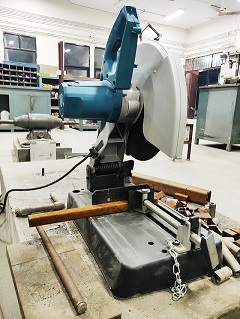
2. 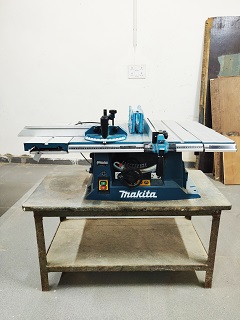
3. 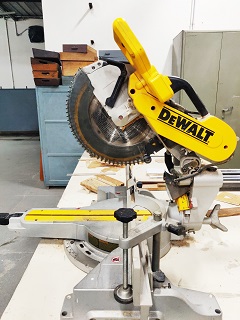
4. 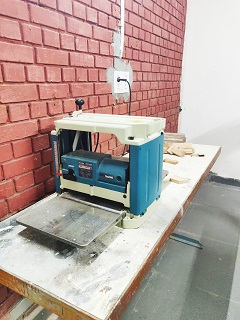
5. 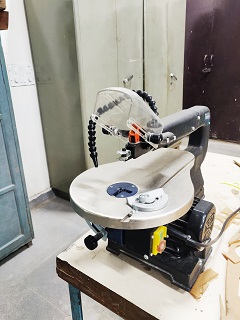
6. 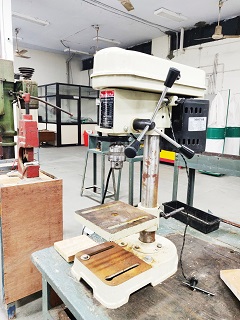
7. 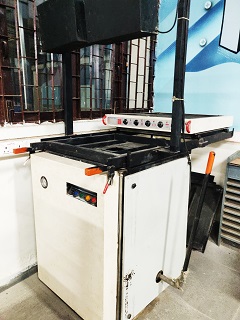
8. 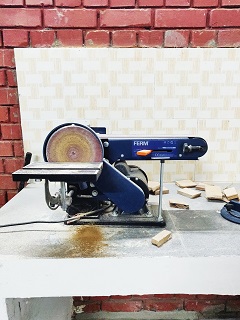
9. 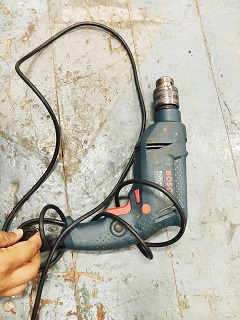
10. 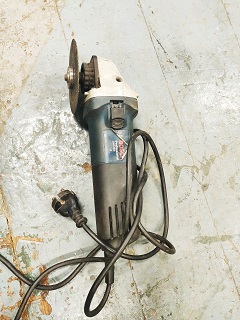
11. 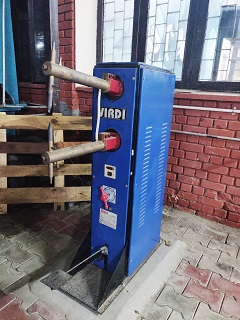
12. 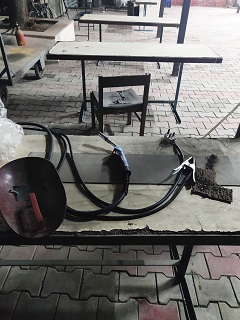
1. Chop Saw - A chop saw is a power tool that used to make straight cuts in wood. The size of the blade allows
carpenters to cut several thicknesses of wood. Special blades will also allow the chop saw to cut metal. It may
have features that allow it to cut angles, which makes it a miter saw.
2. Table Saw - A table saw is a woodworking tool, consisting of a circular saw blade, mounted on an arbor,
that is driven by an electric motor. The blade protrudes through the top of a table, which provides support for
the material, usually wood, being cut.
3. Miter Saw - The almighty miter saw is a powerful tool designed for making cuts at quite a few different
angles. Also known as “compound miter saws”, these work by having a blade mounted to a swing arm that can pivot
either right or left to create cuts that are angled.
4. Planner - The planner is a power tool that helps woodworkers create parallel pieces of wood for various
projects. They’re used to make a board of wood that has already been jointed (hence the frequent comparison to
jointers) flat into equal end-to-end thickness.
5. Scroll Saw - A scroll saw is a small electric or pedal-operated saw used to cut intricate curves in wood,
metal, or other materials. The fineness of its blade allows it to cut more delicately than a power jigsaw, and
more easily than a hand coping saw or fretsaw.
6. Bench Drill - A bench drill is used for drilling holes through materials including a range of woods,
plastics and metals. It is normally bolted to a bench so that it cannot be pushed over and that larger pieces
of material can be drilled safely. The larger version of the machine drill is called the pillar drill.
7. Vaccum Thermoforming - A vacuum thermoforming machine uses a simplified version of thermoforming, where
a sheet of plastic is heated to a forming temperature, stretched onto a single-surface mold, and forced against
the mold by a vacuum. This process can be used to form plastic into permanent objects such as turnpike signs
and protective covers.
8. Bench Sander - A bench sander or strip sander is a sander used in shaping and finishing wood and other
materials.[1] It consists of an electric motor that turns a pair of drums on which a continuous loop of sandpaper
is mounted. Belt sanders may be handheld and moved over the material, or stationary (fixed), where the material
is moved to the sanding belt.
9. Power Drill - A power drill is a tool primarily used for making round holes or driving fasteners. It is
fitted with a bit, either a drill or driver, depending on application, secured by a chuck. Some powered drills
also include a hammer function.
10. Angle Grinder - An angle grinder, also known as a side grinder or disc grinder, is a handheld power tool
used for grinding (abrasive cutting) and polishing. Although developed originally as tools for rigid abrasive discs,
the availability of an interchangeable power source has encouraged their use with a wide variety of cutters and
attachments.
11. Spot Welding - Resistance spot welding (RSW) is a process in which contacting metal surface points are
joined by the heat obtained from resistance to electric current. It is a subset of electric resistance welding.
Work-pieces are held together under pressure exerted by electrodes.
12. MIG Welding - MIG welding is an arc welding process in which a continuous solid wire electrode is fed
through a welding gun and into the weld pool, joining the two base materials together. A shielding gas is also
sent through the welding gun and protects the weld pool from contamination. In fact, MIG stands for metal inert
gas.
4. Working with Materials:
A miter saw is a saw used to make accurate crosscuts and miters in a
workpiece by pulling a large backsaw or a mounted circular saw
blade down onto a board in a quick motion.
I worked with a wooden
workpiece while using this power tool.
A chop saw is an abrasive saw that has a stationary base and a cutting disc that swivels downwards on a hinged arm. Instead of using a sawblade, it often uses abrasive discs known as cutoff wheels. I worked with a metal workpiece while using this tool.
Result:
The assignment has given me relatively good insights on various hand and power
tools with a really exciting learning experience.
The whole task gave me enough knowledge about all the tools, materials, and processes that are mandatory for making products.